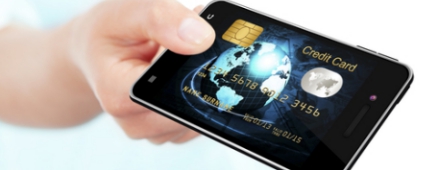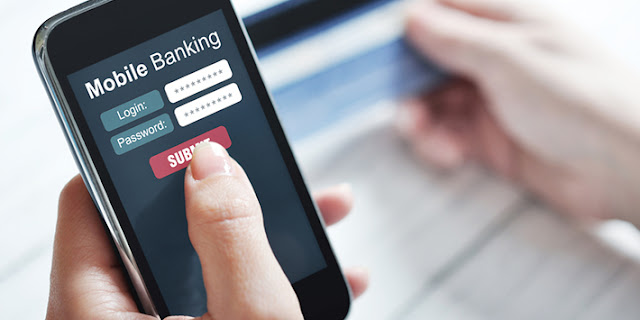Mastercard is just the newest financial behemoth to fly
into the mobile wallet game, but it's not obvious if anyone is attractive in
this space.
At a grandiose occasion atop the world trade middle,
credit card unveiled new technology on the way to allow partnered banks and
outlets to ship and accept cash thru a cellular telephone. The statement
"will have marked a crucial moment in our records, and we are hoping, our
industry," said MasterCard's Craig Vosburg.
however virtually, the affair, for all its grand pronouncements, porcelain
dishware, and servings of cheesecake, isn't likely to prove the sort of turning
point.
For one, the era, which makes use of close to subject communique to transmit
fee information from a cell device to a terminal, isn’t new. iPhone maker Apple
first popularized this generation within the fall of 2014 and given that then,
there have been many tag-along launches. Early competitors protected Android
Pay, Samsung Pay, and the now defunct CurrentC and Softcard. approximately a
month ago, Visa launched a white label app for its partner banks that would enable
them to offer their consumers with a faucet-to-pay feature.
It’s not simply tap-to-pay in stores. credit card and Visa additionally want to
be the charge of preference in cellular apps, when you consider that
increasingly more people are buying on their smartphones. In 2015, cellular
commerce comprised 30% of all electronic income in the U.S., consistent with
net store’s annual report, and that percentage is anticipated to grow
unexpectedly. In January, Forrester research referred to that income on cell
phones by myself grew 53% 12 months over the year. income on capsules has a
tendency to be even stronger.
The purpose of the sudden surge in mobile fee alternatives, from Visa and
MasterCard and by using proxy consumer banks, is that traditional financial
players are being forced via modern in tech startups looking to scoop up their
enterprise. The banks and credit score corporations determine that considering
that they have already got the bulk of customers, all they should do is offer
them with those cool new equipment, and that they’ll be capable of preserving
their chunk of the consumer monetary market.
–– commercial ––
unluckily, that’s no longer how technology works. so one can offer the best
purchaser enjoy, you need to personal all elements of the brand new paying
enjoy, and no one—neither the banks nor the upstart startups—does. This
technological conundrum has precipitated the modern-day visitors jam of mobile
wallets and price methods. The worst element? They’re now not in reality
serving every person.
Barring a totally choose few instance, nobody has been able to make the case
for the usage of a phone in lieu of a credit card at bodily shops. The argument
might be made that tap-to-pay is a lot faster than running the brand new chip
credit score cards that recently rolled out in the states, however, it'd be a
susceptible one. despite the fact that it could be made, no longer all traders
take delivery of NFC, making paying with your smartphone less pinnacle-of-mind
for clients. credit score playing cards simply paintings, and that’s why human
beings use them.
moreover, consumers are confined in how they are able to use cellular bills.
for example, iPhone users can simplest use Apple Pay to pay in shops,
regardless of whether or now not they would opt to use Masterpass or another
NFC-enabled payment app to pay in shops. Of path they can use QR code-based
totally charge apps, but the one's handiest paintings in even extra selective
times, as I’ll explain later. The iPhone maker doesn’t provide the wanted
hardware access to its competition a good way to make their products to be had.
And herein lies the rub. As a patron, you can’t anticipate using someone of
these solutions everywhere. every single one of the mobile payment options to
be had today is restricted in some manner. Apple Pay can be to be had each on
mobile and laptop, but it’s handiest to be had on its personal devices (so if
you have an iPhone and a Chromebook, you need to use a one-of-a-kind fee
utility for each device). Android Pay can be used in a shop, in cellular apps,
and mobile web, however, doesn’t but extend to the computing device. in the
meantime, you could best use PayPal at select merchants on-line, in-app, and
in-save. same goes for Masterpass and Visa’s white-label banking app.
meanwhile, Samsung Pay says it may be used anywhere a credit card is
commonplace, however can’t be used for cellular or e-commerce.
as a way to ditch plastic for virtual, consumers could sign up with a large
number of apps and use them on a case-by way of-case basis. A small online
merchant would possibly insist on PayPal, at the same time as a bigger service
provider like Amazon wishes you to installation an extraordinary account of it.
That leaves customers with a kluge of payments apps that don’t work together or
in any seamless coherent way.
The only area where mobile payments seem to be making a dent in the real world
is in merchant-branded apps. kind of 21% of Starbucks purchasers in the U.S.
use its rewards app whilst paying on the register, in step with Bloomberg. in
the meantime, lunchtime salad bar SweetGreen projected that fifty% of its sales
in 2016 would come through its cellular app, country’s eating place information
reported earlier this year. those apps are the digital manifestation of these
little scannable praise playing cards you used to stack to your keychain,
besides now you could pay with them with a QR code. but these apps are
exclusively used by remarkable customers—die-hards that anticipate to be making
purchases more than one instances a week or month. human beings down load those
apps selectively, due to the fact no one wishes a distinctive app or separate
account for every save they keep at.
until tech organizations or banks can surely provide seamless bills, there may
be too much noise in mobile payments for consumers to need to get involved.
Tags
Tech News


